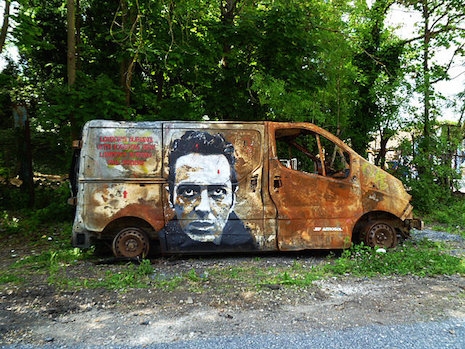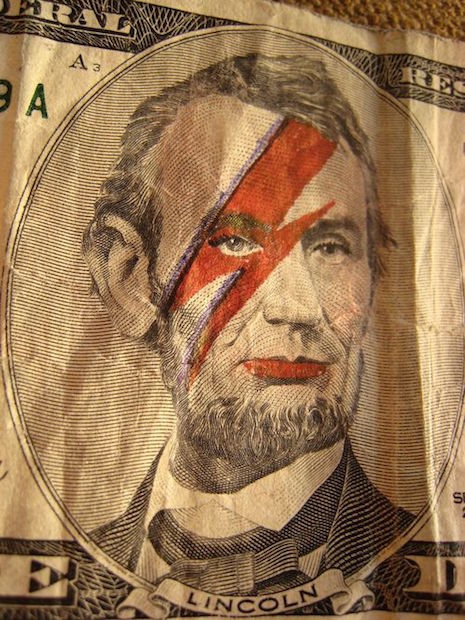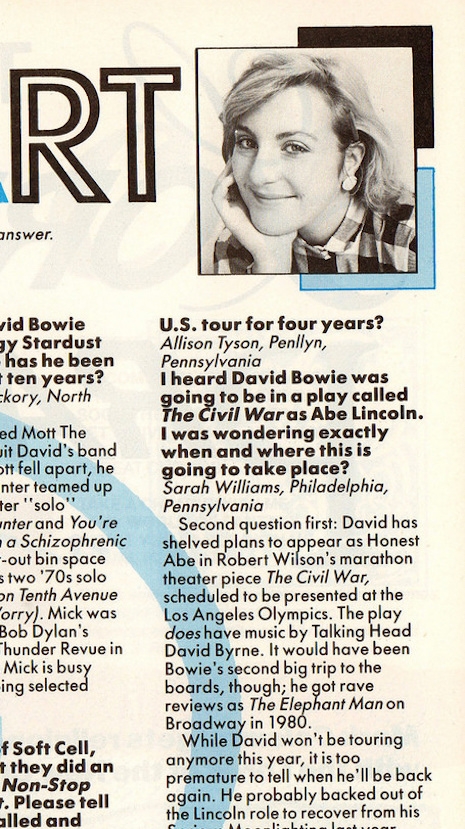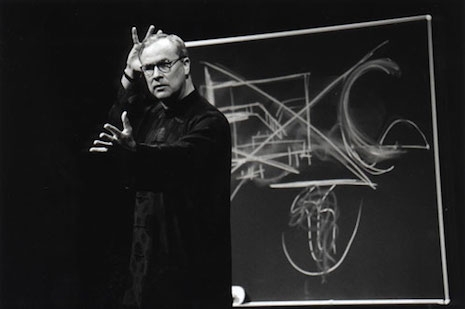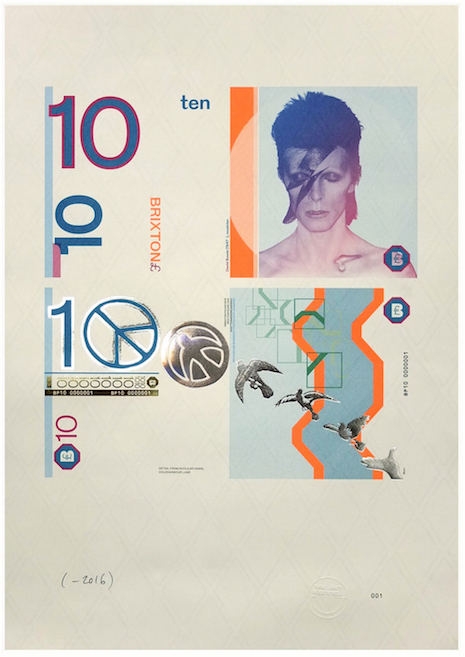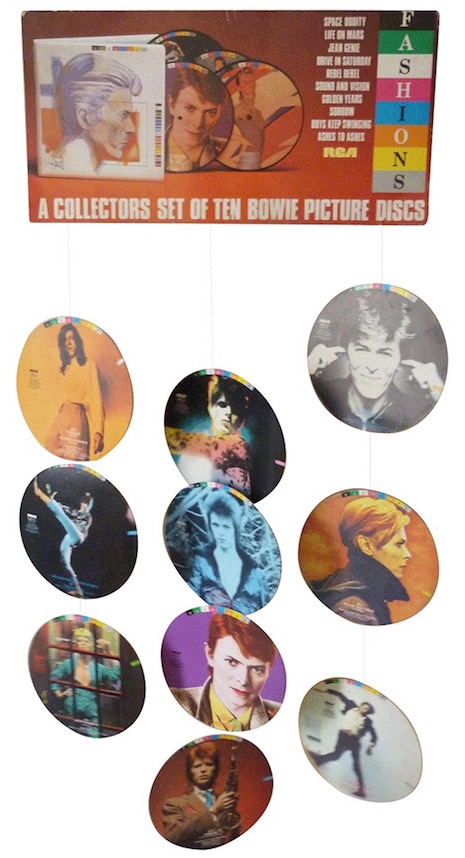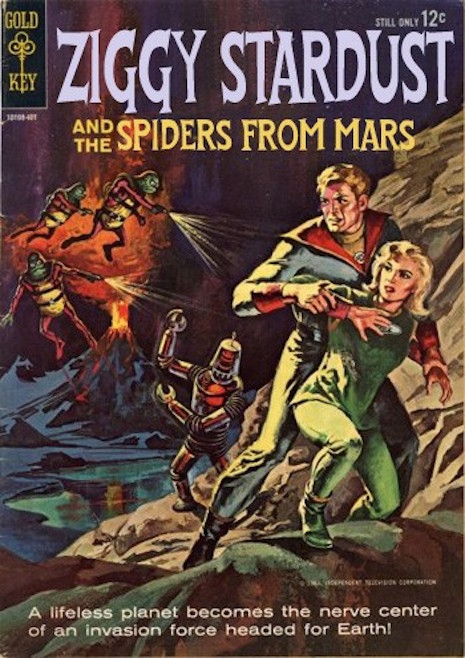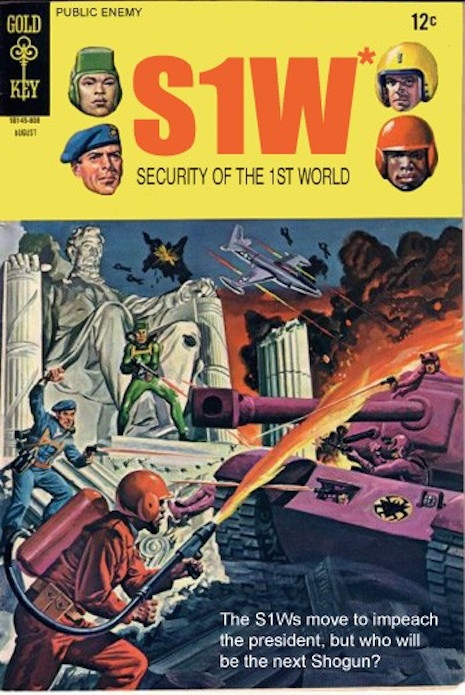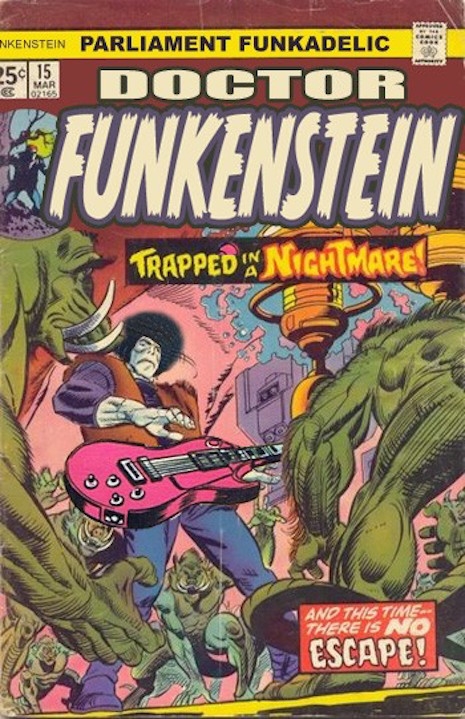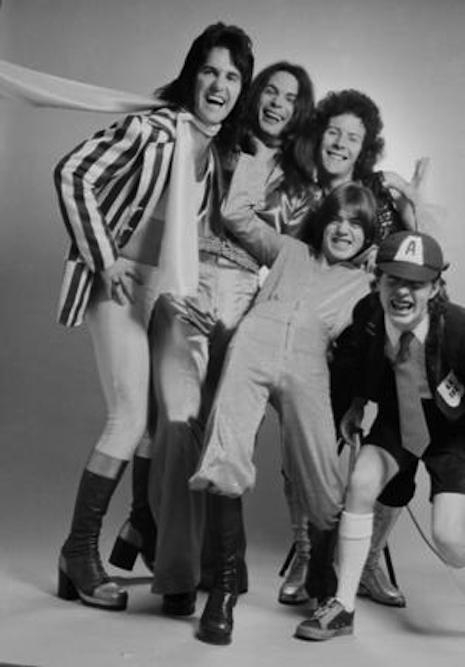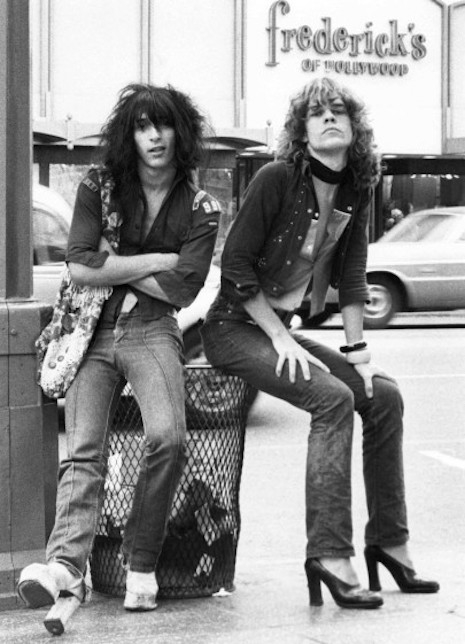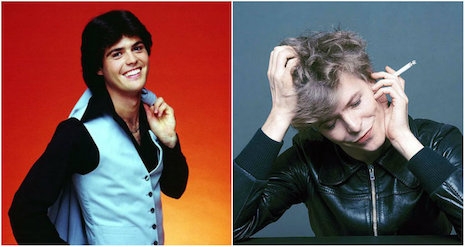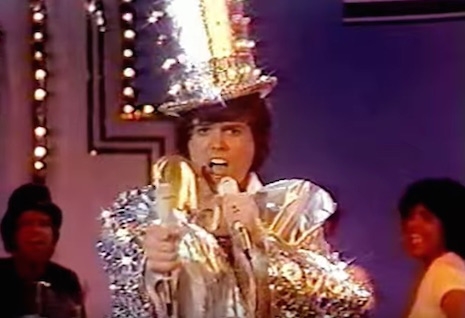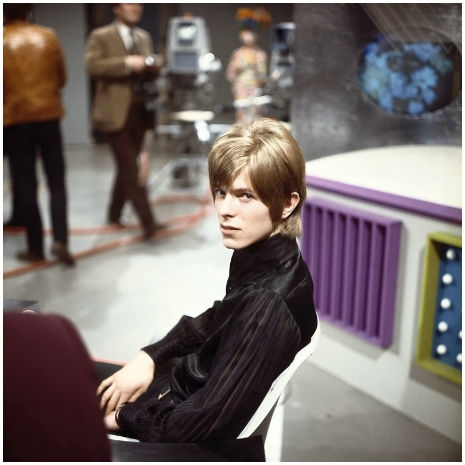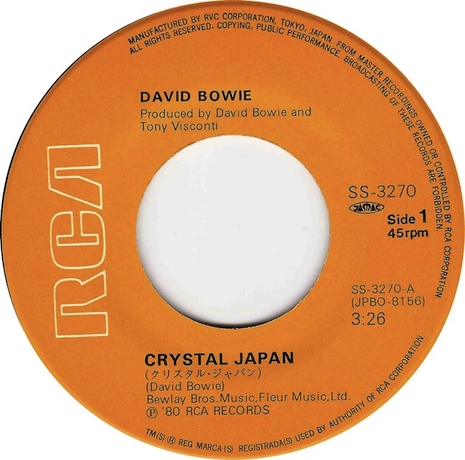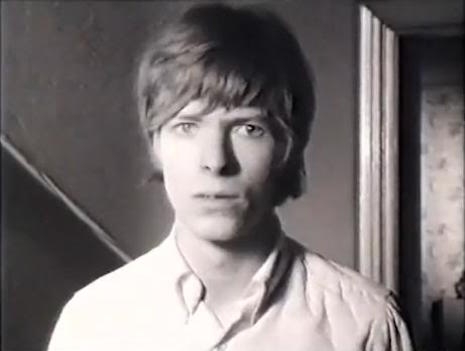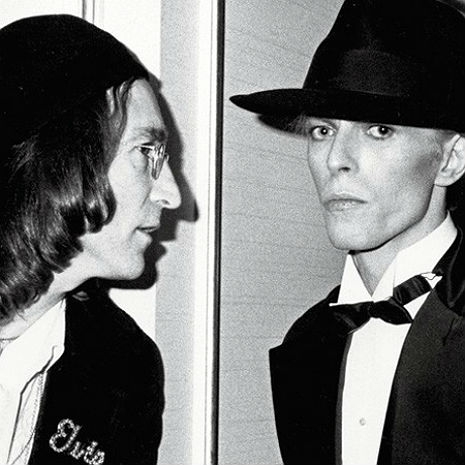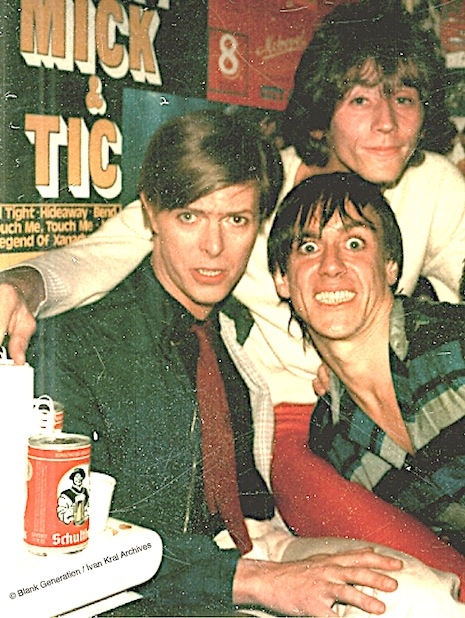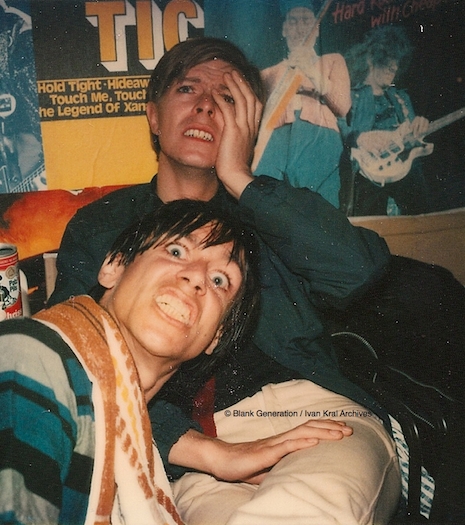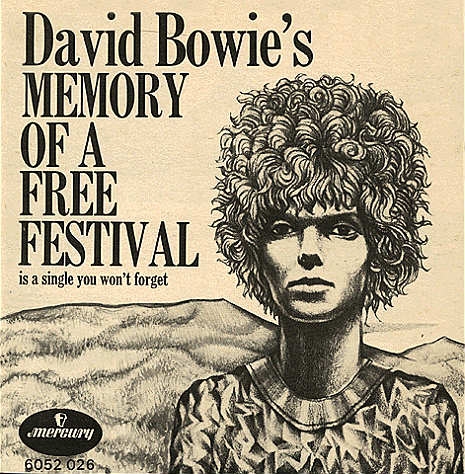
Illustration by Bowie’s childhood friend, George Underwood, who once famously punched him, causing one of Bowie’s blue eyes to turn brown.
David Bowie’s eponymous 1969 release David Bowie (in America it was titled Man of Words/Man of Music and then Space Oddity) is an album that includes some of my favorite “underdog” deep catalog cuts from Bowie’s discography, namely “Cygnet Committee,” “Janine.” “Wild Eyed Boy From Freecloud” and the epic seven-minute-long hippie anthem “Memory of a Free Festival.” I think of it as Bowie’s “Hey Jude” knock-off. It isn’t, exactly, but that there is an obvious similarity few would deny.

“Memory of a Free Festival” is a ghostly-sounding evocation of what seems to be some mind-blowing Hair-like manifestation from long ago and far away, but the actual event it celebrates (the Beckenham Free Festival of August 16, 1969, organized by Bowie and Mary Finnigan) was only about three weeks in the rearview mirror when the song was written and recorded (and it took place in dreary old Croydon, not exactly the fairy wonderland implied by the song’s blissed-out chant.) It could be thought of as a British variation on the same themes of transcendant longhaired communal spirituality as explored in Joni Mitchell’s “Woodstock.”

“Memory of a Free Festival” is essentially two separate songs: the long, slow build-up, with Bowie accompanying himself on a cheap Rosedale Electric Chord Organ, and then the long drawn out chorus/chant fade: “The Sun Machine is coming down and we’re gonna have a party,” a line that is repeated 27 times. Marc Bolan, Radio 1’s “Whispering” Bob Harris, his wife Sue, and future SONY bigwig Tony Woollcott were among those recording the overdubbed background vocals and crowd noises. The two songs were connected by the sound of a cymbal being struck by a small rubber mallet and then slowed and manipulated on tape.
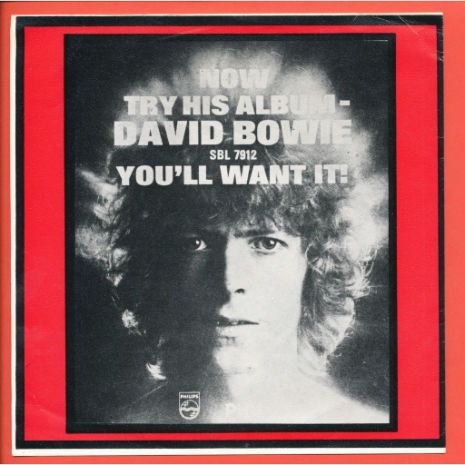
At the request of the American label, Mercury Records, the song was re-recorded as a harder-rocking “electric” version—and split into an A and B side of a 45rpm single—by a pre-Spiders from Mars band that included Mick Ronson (his first session with Bowie), drummer Mick Woodmansey and producer Tony Visconti, who played bass. This version also has a Moog synthesizer played by classical music producer Ralph Mace, who would play the electronic instrument again on The Man Who Sold the World soon afterwards.
The US single was a huge flop, selling but a few hundred copies, which probably shouldn’t have come as much of a surprise considering that the really, really catchy bit doesn’t even start until around the three-minute mark, and thus the B-side.
Continue reading after the jump…








